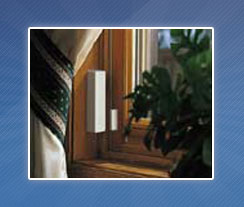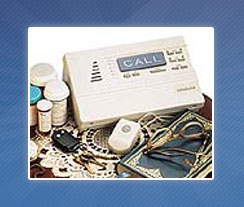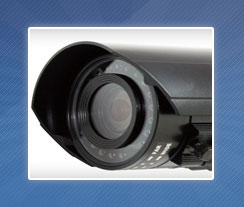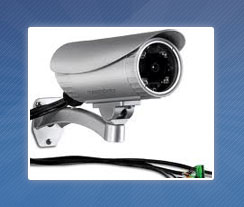Security Products » In Barbados
Residential Security
 Residential security is different than commercial security. The first difference is that you are dealing with people’s homes, families and sentimental items.
Residential security is different than commercial security. The first difference is that you are dealing with people’s homes, families and sentimental items.
There is a large quantity of “Home Security Enhancements” available, which we outline in our FREE Security Surveys. During this survey we will also look at the physical security of your home, IE door and window types, lock styles, lighting, vegetation and much more.
The most recognized enhancement is the introduction of an Intrusion System, they utilize either wired or wireless detectors (or a combination) to cover areas such as doors, windows, wrought iron grills, roller doors, cabinets, bars, safes, patios, even outdoor areas. You can also add Fire and Panic detection to any of these easy to use systems.
Home Surveillance Systems are also growing in popularity, cameras outside (or inside) that can be viewed at home on your TV or off site from a tablet or smart phone.
Keyless entry is also available, coded locks allow for persons to enter their home without the hassle of carrying keys.
As each home is different, a security survey allows us to tailor design a system to suite your individual needs and ensure peace of mind.
Commercial Security
 Commercial security usually takes into account two areas, personal security during working hours and intrusion detection after hours.
Commercial security usually takes into account two areas, personal security during working hours and intrusion detection after hours.
Many companies provide silent panic buttons for their front line staff such as cashiers and receptionists and if you don’t you should. These are normally the first person a would-be criminal will encounter during working hours.
In some instances, access control on the entry door and Closed Circuit Television system are used in conjunction with these systems to offer additional protection to the front line staff. After hours, breaking and entering is more prevalent, and intrusion systems are the rule of thumb. The type of detection and where to locate it, is best determined with a Security Survey. One of the fastest growing concerns in recent years is fire and a fire detection system should be part of any building. Today new technology allows for reduced false alarms and smarter detectors, capable of offering pin-point identification.
Medical Systems
 These systems provide freedom for the physically restricted that allows them to stay in their own home. They are helpful, convenient systems that include water resistant emergency buttons, "No Activity" signaling, "Pill Reminder" and smoke and carbon monoxide detection. All this included in only one package!
These systems provide freedom for the physically restricted that allows them to stay in their own home. They are helpful, convenient systems that include water resistant emergency buttons, "No Activity" signaling, "Pill Reminder" and smoke and carbon monoxide detection. All this included in only one package!
Analog Cameras
 Analog Closed Circuit Television (CCTV) technology was the first video security camera technology. Analog CCTV has long been a trusted and reliable security solution for a variety of surveillance applications, and many homes and businesses have a legacy analog security system in place. Analog cameras provide an easy-to-install, cost-effective, reliable video surveillance solution.
Analog Closed Circuit Television (CCTV) technology was the first video security camera technology. Analog CCTV has long been a trusted and reliable security solution for a variety of surveillance applications, and many homes and businesses have a legacy analog security system in place. Analog cameras provide an easy-to-install, cost-effective, reliable video surveillance solution.
How Does Analog CCTV Technology Work? – Analog cameras process and transmit analog video signals within a specified 'closed circuit' area to a monitor for local central viewing from one location. Analog cameras can be connected to a digital video recorder that enables the analog signal to be converted to a digital video signal. A DVR takes in analog camera signals from point-to-point coaxial cables, converts the analog signals over to a digital signal, and records it to a hard drive. The encoding and processing of the video signals happens in the DVR versus the camera.
IP Cameras
 Today security camera systems are a necessary tool when trying to protect your home or business. Security camera systems have been proven to reduce crime as well provide vital visual evidence in the unfortunate event of a crime. IP Security camera systems boast 100% digital transmission which gives them an advantage over the traditional CCTV security camera systems. With all digital transmission, IP Security camera systems are able to achieve High Definition video quality which provides a more reliable evidence source for police and gives the user the ability to recognize people and events that otherwise would have not been clearly visible.
Today security camera systems are a necessary tool when trying to protect your home or business. Security camera systems have been proven to reduce crime as well provide vital visual evidence in the unfortunate event of a crime. IP Security camera systems boast 100% digital transmission which gives them an advantage over the traditional CCTV security camera systems. With all digital transmission, IP Security camera systems are able to achieve High Definition video quality which provides a more reliable evidence source for police and gives the user the ability to recognize people and events that otherwise would have not been clearly visible.
IP security cameras and IP video servers are connected to an IP network using an Ethernet connection / CAT-5 cable. IP cameras and video servers have built in web servers so that the surveillance video that they transmit can be viewed directly from the camera over the Internet using a web browser, such as Internet Explorer. There is no need for a DVR or video capture card in order to broadcast the surveillance video over the Internet. IP video servers, also known as network video servers turn any CCTV camera (with a standard BNC output) into an IP based network camera (Ethernet output).
Access Control
 As the name implies, this is the control and restriction of entry or exit.
As the name implies, this is the control and restriction of entry or exit.
Businesses use access control to restrict non authorized persons from entering employee only areas and can even utilize access control to restrict entry to sensitive areas. Access control can be further broken down in to restriction devices such as mechanical push button locks, key/combination locks, and electric strikes, magnetic lost and so on. There are also the authorization devices, keypads, proximity readers, biometrics or a combination of them.
These systems often work in conjunction with intercoms and CCTV systems. Some of the systems can track, restrict and alert when a controlled opening is used.
Fire Detection Systems
 Fire Systems come in many shapes and fashion but the two most popular types are Conventional and Addressable.
Fire Systems come in many shapes and fashion but the two most popular types are Conventional and Addressable.
Conventional – Conventional fire alarm control panels are generally less expensive than addressable systems and report alarms utilizing “zones” rather than pinpoint identification. This means that the end user is notified that there is a fire in a general area rather than exactly where in the building the fire is located.
Addressable – Addressable Series as the name implies provides pin-point identification of the exact detector or detectors that are in alarms and thus can pin point exactly where in the building the fire is.
Detectors – Detectors are the device that detects the fire, how it actually detectors depends on the type, smoke detectors detects smoke. Heat detectors detect heat, or rapid changes in heat, carbon monoxide detectors detect carbon monoxide, combo detectors can two or more of these causes. Technology changes and it is no more apparent than in the ability of detectors today; recent devices can adapt to the conditions, self supervise, and self test themselves.
Notification Devices – Fire systems use visual as well as audible devices to alert persons to a fire. Wall strobes, horns, and chimes about the size of a deck of playing cards offer a discreet alternative to bulky devices, while speakers and ceiling models with clean modern lines blend inconspicuously with their surroundings.




